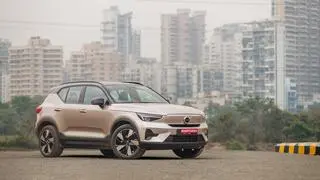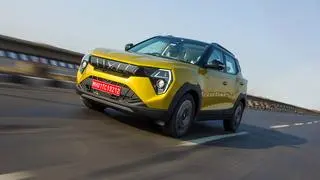BMW has been around in India for a decade now. There is no question that its brand is firmly in place in the luxury car segment. With BMW Motorrad now joining the premium motorcycle parade, this means that it has a worthy sibling to carry its India story forward.
Yet, there are some issues to contend with in Government policies and a tax structure that could hamper growth as well as the much-touted ‘Make in India’ objective. BMW has now consciously decided to focus on contributing to a market for luxury cars, while steering clear of any fight for the top slot.
The German car-maker will centre its India strategy around three pillars: ensuring product variety and value-for-money, increasing the dealership network to reach pockets where wealth is hidden, and providing ease of access with easy finance and packaged deals.
Attracting buyers
“In the last decade, we could see the luxury car market grow somewhat but it is still emerging. There are a combination of aspects which have kept it in its infancy,” says Vikram Pawah, President, BMW Group India, during a recent visit to Ahmedabad. The luxury car market has been static over the last five years at around 35,000 to 45,000 units. BMW is now redefining existing segments to attract value-buyers as part of a strategy to disrupt the premium car space.
“For the first time at the Auto Expo, we launched nine products from each of the three brands under BMW India — BMW, Mini and Motorrad — with seven more due to be launched during the year. The kind of depth of products we have offered is unique in the industry,” says Pawah.
It is also his view that people in India are not price-sensitive but value-sensitive. BMW has recognised this behavioural pattern and is now pulling out all stops to ensure that people are now attracted to the brand for its value-for-money products.
In terms of distribution, BMW has 43 outlets spread across 32 cities and plans to increase this to 50 in 40 cities by 2019. “We have another concept called mobile studio showroom on wheels. It goes to 50 cities on top of the existing 32,” says Pawah.
This is “very helpful” in reaching out to smaller towns where there is growth potential for luxury cars. While this is the good part of the BMW story in India that also saw 25 per cent growth in 2017 and 11 per cent in January-March of this year, there are some headwinds to contend with.
Hurdles
“External factors were negative in the first quarter but we still grew. The hike in customs duty created a negative impact and pulled down sentiment in the market,” says Pawah. This announcement in the Budget was “counterproductive” for the luxury car segment. The BMW India chief is clearly unhappy with this move, which he believes is against the basic concept of Make in India. “We have already invested in the plant and have reached 50 per cent localisation while 95 per cent of our products sold are locally produced in India,” he elaborates.
However, BMW still has not attained the kind of volume where it can localise other components and this is where the hike in import duty will hurt. “If I am being penalised for importing those components at the moment, then that is going to not let me grow my volumes and increase localisation further,” says Pawah.
This is where he believes the move will be counterproductive. As he puts it, if policies were a little bit more consistent and more longer-term oriented, “we could have seen even higher growth”. The industry has now sought a clear roadmap on future policy so that “there are no more surprises”.
After all, luxury car-makers also had to cope with the back-and-forth on cess in the Goods and Services Tax umbrella. What began as good news ended up becoming a damp squib in some weeks as the cess was back to 25 per cent from the original 15 per cent.
Exploring synergies?
Moving beyond cars and into bikes, the obvious question is if there would be any synergies between BMW cars and BMW Motorrad. Pawah maintains that the only common area thus far is that both are from BMW Group India.
“The other aspects of synergy such as possibility of co-branding depends on dealers. If there are common dealers for both brands, there can be side-by-side facilities for BMW cars and Motorrad,” he adds.
BMW Motorrad has introduced 16 products, while the locally-produced G310R and G310GS in collaboration with TVS will be available for sale soon. The existing dealer network of seven is also likely to increase to 10.
In the first year of operations in 2017, 252 units were sold under Motorrad while the first quarter of the current year saw numbers touch 100 units already. The stage is set for BMW Motorrad to grow in the coming years and it will be interesting to see how India also doubles up as a manufacturing hub for some regions around the world.








Comments
Comments have to be in English, and in full sentences. They cannot be abusive or personal. Please abide by our community guidelines for posting your comments.
We have migrated to a new commenting platform. If you are already a registered user of TheHindu Businessline and logged in, you may continue to engage with our articles. If you do not have an account please register and login to post comments. Users can access their older comments by logging into their accounts on Vuukle.